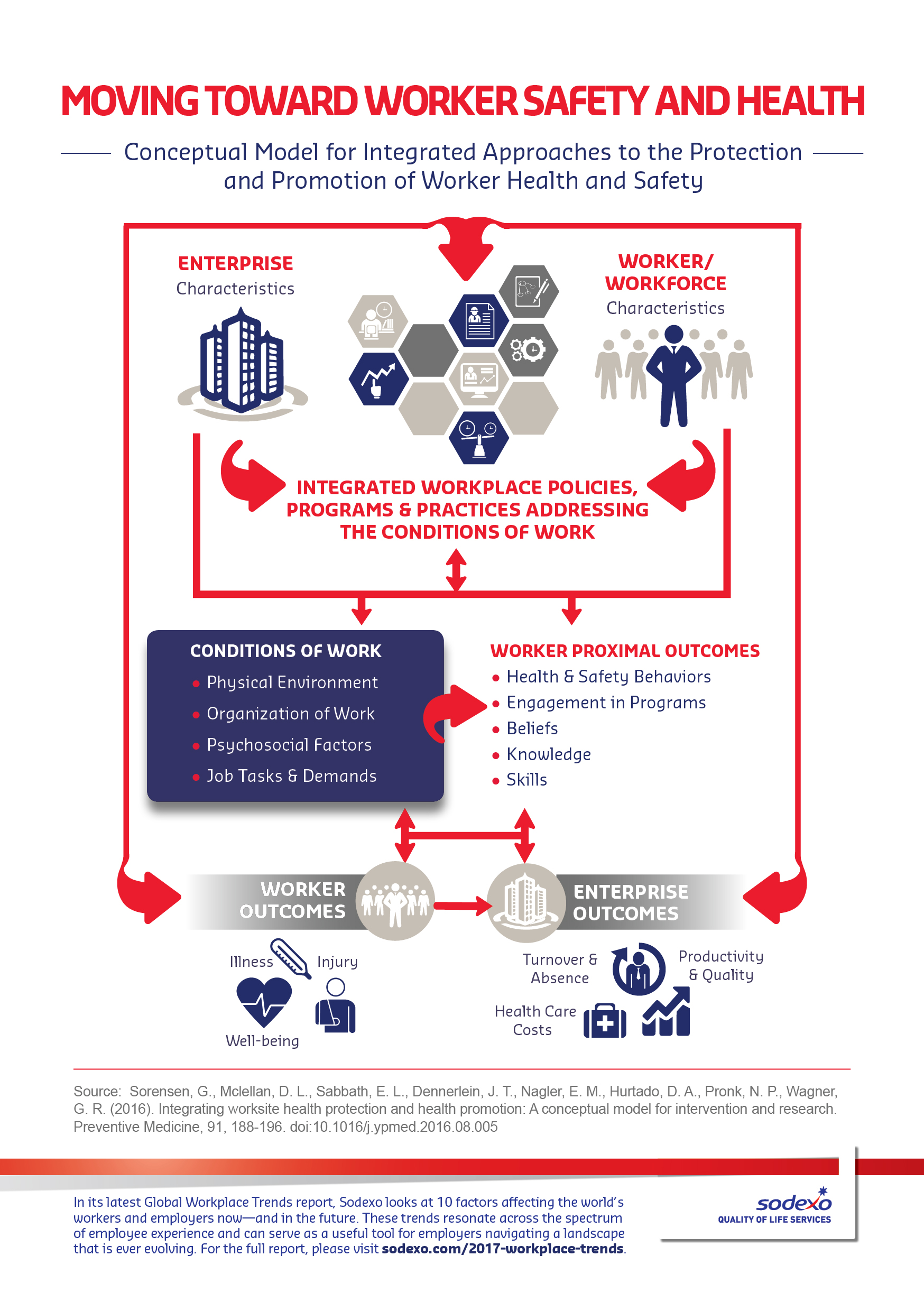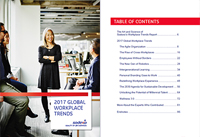Wellness 3.0
The workplace as a wellness destination
NOW
Among U.S. workers with access to a wellness program, only 40% say these programs actually improve their health or wellness, nearly one-third don’t use them, and 10% don’t even know if one is available. Today’s workers are seeking out a new and improved employee value proposition that includes a focus on all aspects of health and well-being. As the boundaries between work and life continue to blur, employees increasingly look to employers to foster a culture of health; to optimize the built environment; and to provide wellness-enhancing amenities, programs and policies. And so employers are taking holistic approaches to workplace wellness, taking all aspects of employees’ health and well-being into consideration.
NEXT
Organizations will go a step further by striving to make workplaces healthy “destinations” for employees — adapting both work and the workplace so that both are truly wellness-enhancing and improve all dimensions of quality of life. These are the types of environments that are increasingly being sought out and even demanded by employees who understand that work can and should contribute to their health, not detract from it.
Employers will embrace this new approach to workplace well-being by developing customized, employee-centric, holistic wellness programs that look at worker wellness as a true advantage. They will find ways to shift already-tight resources to solutions that enhance human health and prevent disease.
To go further
About the 2017 Global Workplace Trends
Every year, Sodexo looks at the main factors affecting the world’s workers and employers now — and in the future. These trends resonate across the spectrum of employee experience and can serve as a useful tool for employers navigating a landscape that is ever evolving.














